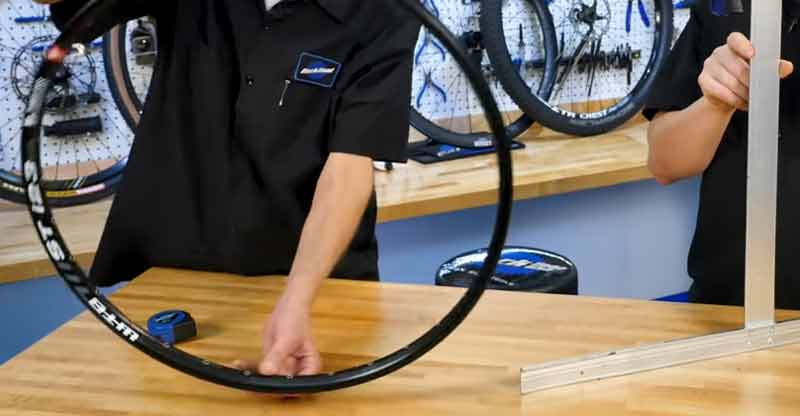We would think it’d be easy to take care of and find the components and poach you need turns out. That’s not always so easy.
It sure would help if the bicycle industry could come up with common terminology when we’re all talking about the same thing.
Tire System
We go all around here and we find them. We have a whole long series right along here, lots of numbers. These are actually three different terms for the same equivalent fit.
We’ll be coming back to this number in just a moment, 27 five number here. It’s a vague tire sizing system. Consider it more a reference number.
It’s not an actual measurement. Nothing on here is measuring 27.5 inches.
Like this tire, it’s labeled as a 27 inch, but this tire is going to be bigger 27 five, clearly, it’s going to be. Larger or maybe, maybe it’s not, maybe it’s not. It’s basically the same.
Now, this is important to know how to measure a bike quickly.
Two different names. The last number in that set is six 50 B it’s yet another vague and squishy system with numbers to work as a reference, but they don’t actually measure anything.
These are from the French tire system. The six 50 millimeter is nominal outside diameter of the tire in the same series of six 50.
There’s a six 58, six 50 B a six 50 C. And none of them are interchanging changing rims or tires. So what exactly are we to do?
Let’s look back at the first number that we saw, the ETR O number, or also known as ISO number.
These numbers actually mean something. The bigger number in this set of five 84, in this case, is the bead seat diameter sometimes called BSD.
Rim
It is the diameter of the wheel where the tire actually sits. On a 27, five, or six 50 B the seat diameter is 584 millimeters with a bead to bead and the rim.
So the other number is the inflated width, which admittedly is a bit nominal running the tire on wide rims or skinny rims will change the number quite drastically.
So that inside diameter of the flange, the second number, the six 22 number is from this bead seat from down here to the bead seat up here, six 22, six 22.
That’s where the tire fits and I got one. Got one right here. Six 22, right on the label where it should be nice. That’ll be great.
As long as we are going in a straight line and this is not so great. This is really extreme. Have a look at the width here and look at the skinniness here.
This is a big plus-sized tire. We need to get a big plus-sized rim for this. You got the skinny room on the big fat tire. Leaning into those corners.
So, what we’ve seen and we’re talking about is all these different tire size, double plus does that it’s a squishy soft system inch 27, five 26, 29 or, or the French six 50 B 700 C 700 knee.
Look that one up and the ISO the 80 T O system it’s giving us numbers that we can check and we know what they’re going to mean. It’s going to make interchangeability a lot nicer.
Conclusion
It’ll be just really good information for us all to know. So, thanks for joining us, and thanks for reading our web blog on this day.

